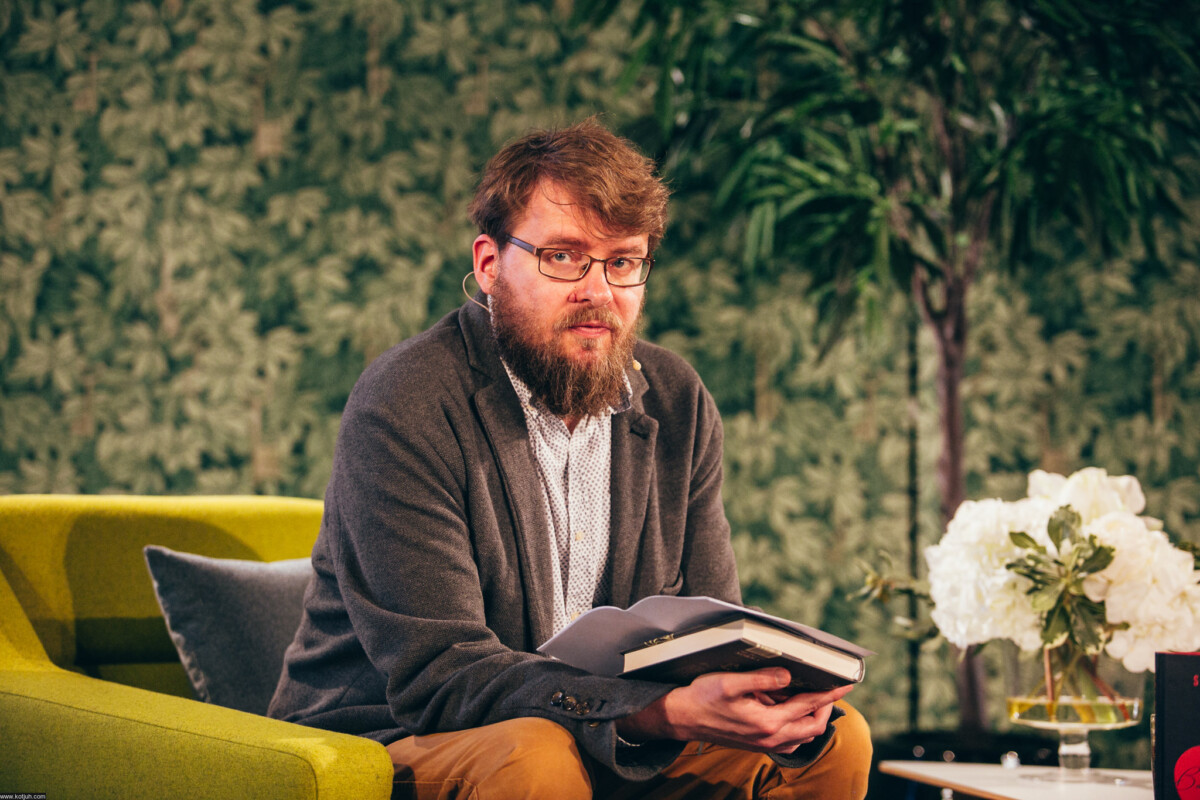In Estonia, an interesting cultural discussion is underway, prompted by a call to celebrate Estonian Literature Day. The proposed date is January 30th, the birthday of classic writer Anton Hansen Tammsaare (1878–1940); his Truth and Justice pentalogy (published 1926–1933) has become a mainspring of Estonian literature and an archetypal description of the nature of Estonianness. Tammsaare’s monumental achievement also contains strong philosophical undercurrents that are given away by the title. The question that his characters so often face can be said to be: Can convictions be used to resolve situations, or must convictions be adjusted to the situations themselves?
Truth and Justice is not the only broad-reaching title in Tammsaare’s catalog. In 1934, he published the novel Life and Love, which was soon followed by I Loved a German. The former word pair is just as important and extensive in the author’s writing as is “truth and justice”. The fourth volume of the pentalogy can, incidentally, be classified as a romance, and thus aligns with the greater motif.
Tammsaare frequently juxtaposed the concepts of life and love. In his perspective, love is not only incongruous with marriage, it also cannot be forced into social conventions on the whole. True love is something so all-encompassing and irrational that its power is difficult to adapt to the rules and contracts of everyday life. Love lacks a social dimension. Writer and literary scholar Jaan Undusk has written a fantastic essay on Tammsaare’s themes of life and love, titled “Love and Sociology”. In it, he remarks: “Love’s origins […] are strict and uncompromising and do not tolerate institutional obstacles, even marriage itself. […] As Tammsaare understands it, there is nothing dear, pleasant, or enjoyable to love. Love is dangerous and sublime; it is fatal Eros.”
If we follow Undusk’s line of reasoning, then love is matched, not so much to life as it is, to death; for the greatest love is an unhappy one, and the greatest unhappy love ends in the death of one or both lovers. At the same time, we mustn’t forget that the very existence of Tammsaare’s star-crossed characters would be rather insignificant without that emotion. Love’s power simultaneously destroys and redeems a lover’s life.
But what is the point of my writing all this?
Recently, I noticed Tammsaare’s leitmotif vividly manifest in poet and prosaist Kai Aareleid’s (1972) third novel, Vaikne Ookean (Pacific Ocean, 2021).
To begin somewhat simplistically, Pacific Ocean explores the relationships between three generations of men and women. Aareleid likewise contrasts the concepts of marriage and love, the latter of which often fails to find space within the former. “You might experience more than one great love in your lifetime,” says one of her characters. The statement teeters on the edge of generally accepted societal norms. It doubts marriage’s singular dimension, if not the entire institution: the idea that a person may marry only once, or that marriage is the sole contract of expressed intimacy. Several of Aareleid’s main characters are involved in passionate extramarital affairs, drawing a direct line to Volume IV of Truth and Justice, which, according to Undusk, highlights the institution of marriage as one impediment to love. Pacific Ocean is thus a gentle song of praise to love’s complexity; to the fact that it’s hard to place love in the framework of the ordinary conventions meant to regulate.
The Tammsaarean theme of life and love is especially palpable in the chapter “The Seamstress’ Story”, in which a woman named Helene tells her lover Mihkel that she must end their affair and focus on her marriage to Johannes. “You used to believe this was everything you needed,” Mihkel says, to which Helene replies: “It was, for what we were doing here. Not for life!” In Life and Love, Tammsaare wrote: “They wanted to be happy once more, no matter the cost. They wanted to forget once more that it was life, and to believe there was only love.” Helene is conveying a similar sentiment. Love can pass, transforming into life, and “what you have left then is the mundane, which buries us beneath it. I’ll be unsatisfied and then you’ll start hating me and nothing will be the way we want it to be.” Mihkel and Helene’s love is ultimately unfulfilled. Life stakes its claim and forces love to retreat. However, Johannes – who realizes that Helene’s heart doesn’t belong to him – is later killed in a train wreck. We can imagine Tammsaare’s conclusion: if there is no love, then neither is there life.
But perhaps love’s true meaning is only revealed when it is unfulfilled; when it is incomplete; when it isn’t exhausted. Love is a task that lacks a true, satisfying solution. To put it in universal terms, true love belongs to no one. One who is in love does not possess it, but neither does love possess the person. Both Tammsaare’s and Aareleid’s love-struck characters grapple with its strong, unpredictable, inevitable force. The dilemma of life and love is timeless.




